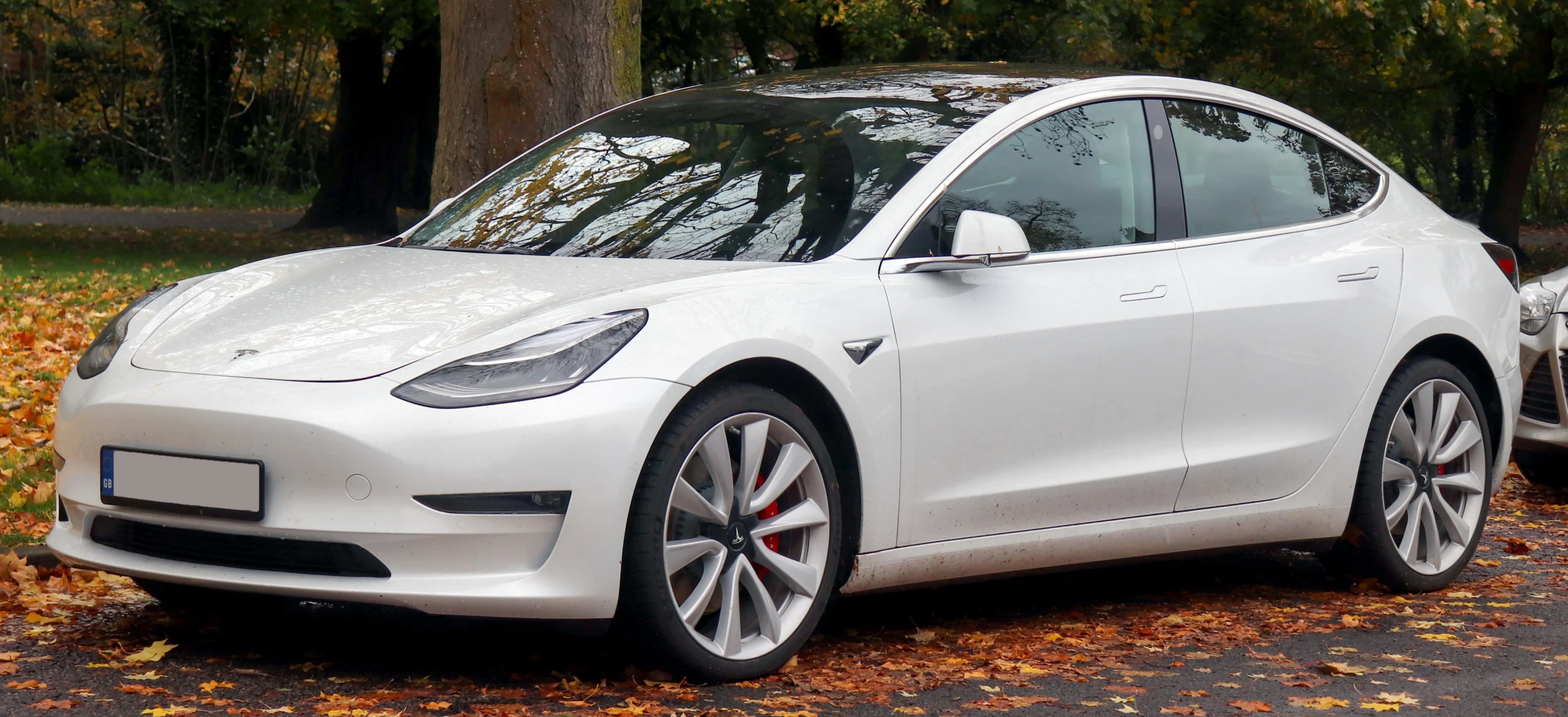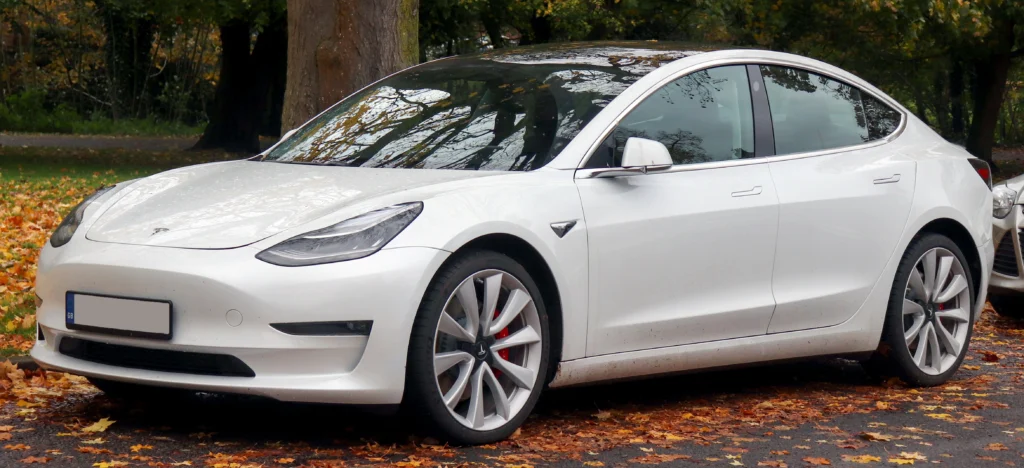
The Tesla Model 3 is more than just an automobile; it represents a revolution in the electric vehicle (EV) industry. Since its launch in 2017, it has become one of the best-selling electric cars worldwide. Combining cutting-edge technology, outstanding performance, and affordability, the Model 3 is a game-changer. This article explores the design, performance, technology, and market impact of the Tesla Model 3 and compares it with other leading EVs like the Hyundai Ioniq 5, BMW i4, Polestar 2, and Chevrolet Bolt EUV.
The Model 3 was designed to be Tesla’s first mass-market EV, offering a more accessible price point compared to the luxury Model S and Model X. Since its release, it has gained widespread popularity among everyday consumers and EV enthusiasts.
One of the best-selling EVs globally.
Provides a balance of affordability, performance, and technology.
Helps establish Tesla as a leader in the EV industry.
The Tesla Model 3 stands out with its sleek, aerodynamic, and minimalist design. Notable features include:
Low-slung silhouette with a sloping roofline for a sporty and modern look.
Drag coefficient of 0.23, reducing air resistance and enhancing efficiency.
Absence of a front grille, giving it a futuristic appeal.
Full LED lighting, including adaptive headlights for better visibility.
Hyundai Ioniq 5: Retro-futuristic design with sharp lines and pixel-inspired lighting.
BMW i4: Traditional BMW aesthetics with a kidney grille and sporty stance.
Polestar 2: Scandinavian-inspired design, prioritizing sustainability over aerodynamics.
Stepping inside the Tesla Model 3, one is greeted by a minimalist, high-tech cabin.
15-inch touchscreen display controlling all vehicle functions.
Absence of physical buttons, creating a clean, futuristic dashboard.
Premium materials like vegan leather and real wood trims.
Glass roof providing an airy and spacious feel.
Ample storage, including a front trunk (“frunk”).
Hyundai Ioniq 5: Dual-screen setup with physical buttons and a flexible console.
BMW i4: Luxurious, driver-focused layout but less minimalist.
Polestar 2: Sustainable materials, but less technological integration.
The Tesla Model 3 delivers an exhilarating driving experience akin to a high-performance sports car.
0-60 mph in as little as 3.1 seconds (Performance variant).
Low center of gravity for agile handling.
Dual-motor all-wheel drive for better traction.
Regenerative braking improving efficiency and extending battery life.
Hyundai Ioniq 5: Smooth ride but lacks sporty handling.
BMW i4: Precise handling but heavier than Model 3.
Polestar 2: Quick and fun to drive but not as fast as the Model 3 Performance.

Range anxiety is a common concern for EV buyers, but the Tesla Model 3 addresses this with impressive range figures and access to Tesla’s Supercharger network.
Up to 358 miles per charge (Long Range variant).
Supercharging adds up to 200 miles in 15 minutes.
Home charging via Tesla Wall Connector or standard outlet.
Hyundai Ioniq 5: 303-mile range; ultra-fast charging (80% in 18 minutes).
BMW i4: 301-mile range; competitive fast-charging capability.
Polestar 2: 270-mile range; slower charging speed than Model 3.
Among the most technologically advanced cars, the Model 3 is packed with smart features.
Autopilot: Advanced driver-assistance system with adaptive cruise control and lane keeping.
Over-the-Air (OTA) Updates: Software enhancements improving vehicle functionality.
Intelligent Infotainment: Voice commands, navigation, streaming services.
Hyundai Ioniq 5: User-friendly interface but lacks Tesla’s Autopilot.
BMW i4: High-tech iDrive system, but less advanced driver-assistance features.
Polestar 2: Google-based infotainment but lacks deep Tesla-style integration.
Safety is a top priority for Tesla, and the Model 3 has received top ratings from safety organizations like Euro NCAP and NHTSA.
Autonomous emergency braking & collision avoidance.
Eight airbags ensuring comprehensive occupant protection.
High-strength body structure for impact resistance.
Hyundai Ioniq 5: Strong safety ratings but lacks Tesla’s structural enhancements.
BMW i4: Excellent safety features but not as structurally innovative.
Polestar 2: Well-built, but some safety tech lags behind Tesla.
✔ Long range and rapid charging. ✔ Cutting-edge technology and over-the-air updates. ✔ Minimalist, futuristic interior. ✔ Access to Tesla’s Supercharger network. ✔ High safety ratings.
✖ Build quality concerns reported by some owners. ✖ Minimalist interior may not appeal to all. ✖ Heavy touchscreen reliance can be distracting.
The Tesla Model 3 has significantly influenced the electric vehicle market by demonstrating that EVs can be affordable, practical, and enjoyable to drive. It has forced legacy automakers to accelerate their own EV programs.
The Tesla Model 3 is more than just a car—it’s a statement of the future. With its blend of performance, technology, and sustainability, it remains one of the most compelling choices in the EV space. While rivals like the Hyundai Ioniq 5, BMW i4, and Polestar 2 offer solid alternatives, the Model 3 stands out for its range, tech, and driving experience. As Tesla continues to innovate, the Model 3 will remain a frontrunner in the EV revolution. ⚡🚗